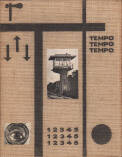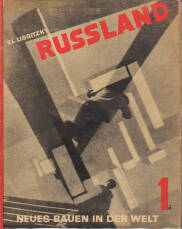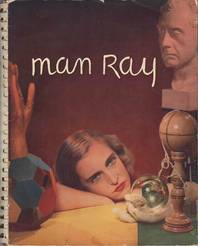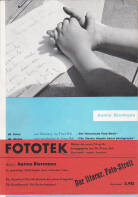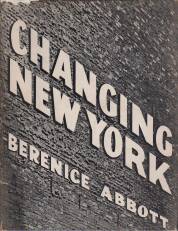Night Procession (signed)
by Stephen Gill
Photographs: Stephen Gill
Text: Karl Ove Knausgård
Publisher: Nobody
160 pages
Pictures: 86
Year: 20
ISBN: 978-0-9575369-3-7
Comments: Cloth bound hardback, 216 mm x 270 mm, book contains inserted 16 page saddle stitched booklet with essay (170 mm x 240 mm)
The photographs in this book have a ceremonial quality about them, as if the animals and the birds present themselves to us one by one – the fox, the hare, the wild boar, the deer, the mouse, the snail, the bird of prey, the fledglings, the owl – as well as something rather solemn, in that we see them the way they are in themselves, in their own world, normally so out of reach from our own. The world we see in these images is a secret world, though no less so when light re- turns to the land, the animals retreat into hiding and the forest again becomes recognisable to us; on the contrary, the mystery seems only to thicken. - Karl Ove Knausgård
Night Procession has been presented with this year’s Benrido HARIBAN AWARD
In March 2014, my family and I moved from east London to rural south Sweden where my partner Lena is from. I understood that these new surroundings would inform my work in very different ways and that nature would play a key role. I was looking forward to making work that did not feel restricted and suffocated by modern photographic technology nor would make an inaccurate projected impression of the natural landscape we had become part of.
On my many walks, I soon came to realise that this new, apparently bleak, flat and open landscape was in fact teeming with intense life. Small clues appeared during daylight hours that helped me understand the extent of activity during the night. Clusters of feathers, animal footprints of all sizes showing regular overlapping routes, gnawed branches, eggshells, ant hills, nibbled mushrooms and busy snails and slugs working through the feast provided from the previous night
I started to imagine the creatures in absolute darkness on the forest floor driven by instincts and their will to survive. I imagined them encountering each other. I thought of their eyes – near redundant in the thick of the night – and their sense of smell and hearing finely tuned and heightened.
Envisaging where this activity might unfold, coupled with a hopeful foresight, I placed cameras equipped with motion sensors, to trees, mostly at a low level, so that any movement triggered the camera shutter and an infra-red flash (which was outside the animals’ visual spectrum).
The first results filled me with fascination and joy as they presented what felt like stepping off into another parallel and unearthly world. The silent photographs also seemed to invent sounds. This frame of mind and way of working took me back to my first ever photo project at the age of 13, sitting in the bathroom window of my parents’ house in Bristol with a 10-metre cable release, attached to the camera, attempting to photograph garden birds.
As time went on I started to think, if I were a deer where would I drink from, or if an owl where would I prefer to perch, and positioned cameras in such places. I was already composing the rectangular view in my mind’s eye – even though the nocturnal animals were absent – imagining they were there. Nature itself helped to decide the palette and the feel of the images as plant pigments were incorporated from the surrounding areas to make the final master prints.
I had grappled for many years with this idea of stepping back as the author of images to give space for chance and to encourage the subject to step forward. I had attempted this in various ways; for example, in 2005, by burying colour prints close to where they were made, as a collaboration, to entice the place itself to leave its physical mark on the images once they had been unearthed. Or, between 2009 - 2013, in the series Talking to Ants, I placed objects such as plant life, insects, seeds and dust from the place I was photographing inside the film chamber to create in-camera photograms creating a confusion of scale. Or, in 2012, in Best Before End, as a photographic response to the rise of high-energy drinks, I used the drinks themselves to part-process the film as they ate into the emulsion. These approaches added an element of uncertainty, without knowing exactly where the images would land, and relied on a point where intentions met chance with the hope that the subject itself could play a part, lead the way or become embedded in the finished images.
This time, though, it felt as if I was stepping out altogether, so that the subjects would orchestrate and perform and take on the role of author while at that moment I was likely to be sleeping. This was nature’s time to speak and let itself be felt and known.
Stephen Gill
More books by Stephen Gill
-
Coexistence
by Stephen Gill
sold out -
Hackney Kisses (signed)
by Stephen Gill
sold out -
Pigeons (last copies)
by Stephen Gill
Euro 35 -
Coming up for Air
by Stephen Gill
Euro 44 -
Hackney Kisses
by Stephen Gill
Euro 48 -
Best Before End
by Stephen Gill
Euro 48 -
Archaeology in Reverse
by Stephen Gill
Euro 48 -
The Pillar
by Stephen Gill
sold out
more books tagged »animals« | >> see all
-
Ashes and Snow book n° 8
by Gregory Colbert
sold out -
Ashes and Snow Exhibition Catalogue
by Gregory Colbert
sold out -
Girl Plays with Snake
by Clare Strand
Euro 38.50 -
Pecorino Calendar 2014
by Toni Anzenberger
sold out -
Pecorino in Styria
by Toni Anzenberger
sold out -
Misao, The Big Mama And Fukumaru The Cat Goodbye Hello
by Miyoko Ihara
sold out
more books tagged »forest« | >> see all
-
The Garden
by Alessandro Imbriaco
Euro 35 -
Cry of an Echo (signed)
by Malgorzata Stankiewicz
Euro 38.50 -
Eternal U (signed)
by Hubert Humka
Euro 74 -
The Australian Journey (collector's edition - book + print)
by Regina Anzenberger
Euro 280 -
Roots & Bonds (signed - last two copies)
by Regina Anzenberger
sold out -
Shifting Roots (signed)
by Regina Anzenberger
Euro 65
more books tagged »British« | >> see all
-
East London: An opinionated Guide
by Sonya Barber & Charlotte Schreiber
Euro 14 -
Border Roads 1990 –1994
by Tony O'Shea
Euro 25 -
Open: Twenty one photographs (book + print)
by Brian Griffin
Euro 395 -
Remote Scottish Postboxes (signed - last copies)
by Martin Parr
Euro 165 -
Hand Jobs: Life as a Hand Model
by Oli Kellett & Alex Holder
Euro 18 -
Makers of East London - used copy
by Charlotte Schreiber & Katie Treggiden
Euro 39 23.40
more books tagged »animal« | >> see all
-
Pride (book + print)
by Olga Titova
Euro 33 -
The Pigeon Photographer
by Julius G. Neubronner
sold out -
Pecorino in Munich
by Toni Anzenberger
Euro 18 9.00 -
Being Human
by William Wegman
sold out
Random selection from the Virtual bookshelf josefchladek.com
Night Procession (signed)
by Stephen Gill
Photographs: Stephen Gill
Text: Karl Ove Knausgård
Publisher: Nobody
160 pages
Pictures: 86
Year: 20
ISBN: 978-0-9575369-3-7
Comments: Cloth bound hardback, 216 mm x 270 mm, book contains inserted 16 page saddle stitched booklet with essay (170 mm x 240 mm)
The photographs in this book have a ceremonial quality about them, as if the animals and the birds present themselves to us one by one – the fox, the hare, the wild boar, the deer, the mouse, the snail, the bird of prey, the fledglings, the owl – as well as something rather solemn, in that we see them the way they are in themselves, in their own world, normally so out of reach from our own. The world we see in these images is a secret world, though no less so when light re- turns to the land, the animals retreat into hiding and the forest again becomes recognisable to us; on the contrary, the mystery seems only to thicken. - Karl Ove Knausgård
Night Procession has been presented with this year’s Benrido HARIBAN AWARD
In March 2014, my family and I moved from east London to rural south Sweden where my partner Lena is from. I understood that these new surroundings would inform my work in very different ways and that nature would play a key role. I was looking forward to making work that did not feel restricted and suffocated by modern photographic technology nor would make an inaccurate projected impression of the natural landscape we had become part of.
On my many walks, I soon came to realise that this new, apparently bleak, flat and open landscape was in fact teeming with intense life. Small clues appeared during daylight hours that helped me understand the extent of activity during the night. Clusters of feathers, animal footprints of all sizes showing regular overlapping routes, gnawed branches, eggshells, ant hills, nibbled mushrooms and busy snails and slugs working through the feast provided from the previous night
I started to imagine the creatures in absolute darkness on the forest floor driven by instincts and their will to survive. I imagined them encountering each other. I thought of their eyes – near redundant in the thick of the night – and their sense of smell and hearing finely tuned and heightened.
Envisaging where this activity might unfold, coupled with a hopeful foresight, I placed cameras equipped with motion sensors, to trees, mostly at a low level, so that any movement triggered the camera shutter and an infra-red flash (which was outside the animals’ visual spectrum).
The first results filled me with fascination and joy as they presented what felt like stepping off into another parallel and unearthly world. The silent photographs also seemed to invent sounds. This frame of mind and way of working took me back to my first ever photo project at the age of 13, sitting in the bathroom window of my parents’ house in Bristol with a 10-metre cable release, attached to the camera, attempting to photograph garden birds.
As time went on I started to think, if I were a deer where would I drink from, or if an owl where would I prefer to perch, and positioned cameras in such places. I was already composing the rectangular view in my mind’s eye – even though the nocturnal animals were absent – imagining they were there. Nature itself helped to decide the palette and the feel of the images as plant pigments were incorporated from the surrounding areas to make the final master prints.
I had grappled for many years with this idea of stepping back as the author of images to give space for chance and to encourage the subject to step forward. I had attempted this in various ways; for example, in 2005, by burying colour prints close to where they were made, as a collaboration, to entice the place itself to leave its physical mark on the images once they had been unearthed. Or, between 2009 - 2013, in the series Talking to Ants, I placed objects such as plant life, insects, seeds and dust from the place I was photographing inside the film chamber to create in-camera photograms creating a confusion of scale. Or, in 2012, in Best Before End, as a photographic response to the rise of high-energy drinks, I used the drinks themselves to part-process the film as they ate into the emulsion. These approaches added an element of uncertainty, without knowing exactly where the images would land, and relied on a point where intentions met chance with the hope that the subject itself could play a part, lead the way or become embedded in the finished images.
This time, though, it felt as if I was stepping out altogether, so that the subjects would orchestrate and perform and take on the role of author while at that moment I was likely to be sleeping. This was nature’s time to speak and let itself be felt and known.
Stephen Gill
More books by Stephen Gill
-
Coexistence
by Stephen Gill
sold out -
Hackney Kisses (signed)
by Stephen Gill
sold out -
Pigeons (last copies)
by Stephen Gill
Euro 35 -
Coming up for Air
by Stephen Gill
Euro 44 -
Hackney Kisses
by Stephen Gill
Euro 48 -
Best Before End
by Stephen Gill
Euro 48 -
Archaeology in Reverse
by Stephen Gill
Euro 48 -
The Pillar
by Stephen Gill
sold out
more books tagged »animals« | >> see all
-
Ashes and Snow book n° 8
by Gregory Colbert
sold out -
Ashes and Snow Exhibition Catalogue
by Gregory Colbert
sold out -
Girl Plays with Snake
by Clare Strand
Euro 38.50 -
Pecorino Calendar 2014
by Toni Anzenberger
sold out -
Pecorino in Styria
by Toni Anzenberger
sold out -
Misao, The Big Mama And Fukumaru The Cat Goodbye Hello
by Miyoko Ihara
sold out
more books tagged »forest« | >> see all
-
The Garden
by Alessandro Imbriaco
Euro 35 -
Cry of an Echo (signed)
by Malgorzata Stankiewicz
Euro 38.50 -
Eternal U (signed)
by Hubert Humka
Euro 74 -
The Australian Journey (collector's edition - book + print)
by Regina Anzenberger
Euro 280 -
Roots & Bonds (signed - last two copies)
by Regina Anzenberger
sold out -
Shifting Roots (signed)
by Regina Anzenberger
Euro 65
more books tagged »British« | >> see all
-
East London: An opinionated Guide
by Sonya Barber & Charlotte Schreiber
Euro 14 -
Border Roads 1990 –1994
by Tony O'Shea
Euro 25 -
Open: Twenty one photographs (book + print)
by Brian Griffin
Euro 395 -
Remote Scottish Postboxes (signed - last copies)
by Martin Parr
Euro 165 -
Hand Jobs: Life as a Hand Model
by Oli Kellett & Alex Holder
Euro 18 -
Makers of East London - used copy
by Charlotte Schreiber & Katie Treggiden
Euro 39 23.40
more books tagged »animal« | >> see all
-
Pride (book + print)
by Olga Titova
Euro 33 -
The Pigeon Photographer
by Julius G. Neubronner
sold out -
Pecorino in Munich
by Toni Anzenberger
Euro 18 9.00 -
Being Human
by William Wegman
sold out
Random selection from the Virtual bookshelf josefchladek.com
Night Procession (signed)
by Stephen Gill
Photographs: Stephen Gill
Text: Karl Ove Knausgård
Publisher: Nobody
160 pages
Pictures: 86
Year: 20
ISBN: 978-0-9575369-3-7
Comments: Cloth bound hardback, 216 mm x 270 mm, book contains inserted 16 page saddle stitched booklet with essay (170 mm x 240 mm)
The photographs in this book have a ceremonial quality about them, as if the animals and the birds present themselves to us one by one – the fox, the hare, the wild boar, the deer, the mouse, the snail, the bird of prey, the fledglings, the owl – as well as something rather solemn, in that we see them the way they are in themselves, in their own world, normally so out of reach from our own. The world we see in these images is a secret world, though no less so when light re- turns to the land, the animals retreat into hiding and the forest again becomes recognisable to us; on the contrary, the mystery seems only to thicken. - Karl Ove Knausgård
Night Procession has been presented with this year’s Benrido HARIBAN AWARD
In March 2014, my family and I moved from east London to rural south Sweden where my partner Lena is from. I understood that these new surroundings would inform my work in very different ways and that nature would play a key role. I was looking forward to making work that did not feel restricted and suffocated by modern photographic technology nor would make an inaccurate projected impression of the natural landscape we had become part of.
On my many walks, I soon came to realise that this new, apparently bleak, flat and open landscape was in fact teeming with intense life. Small clues appeared during daylight hours that helped me understand the extent of activity during the night. Clusters of feathers, animal footprints of all sizes showing regular overlapping routes, gnawed branches, eggshells, ant hills, nibbled mushrooms and busy snails and slugs working through the feast provided from the previous night
I started to imagine the creatures in absolute darkness on the forest floor driven by instincts and their will to survive. I imagined them encountering each other. I thought of their eyes – near redundant in the thick of the night – and their sense of smell and hearing finely tuned and heightened.
Envisaging where this activity might unfold, coupled with a hopeful foresight, I placed cameras equipped with motion sensors, to trees, mostly at a low level, so that any movement triggered the camera shutter and an infra-red flash (which was outside the animals’ visual spectrum).
The first results filled me with fascination and joy as they presented what felt like stepping off into another parallel and unearthly world. The silent photographs also seemed to invent sounds. This frame of mind and way of working took me back to my first ever photo project at the age of 13, sitting in the bathroom window of my parents’ house in Bristol with a 10-metre cable release, attached to the camera, attempting to photograph garden birds.
As time went on I started to think, if I were a deer where would I drink from, or if an owl where would I prefer to perch, and positioned cameras in such places. I was already composing the rectangular view in my mind’s eye – even though the nocturnal animals were absent – imagining they were there. Nature itself helped to decide the palette and the feel of the images as plant pigments were incorporated from the surrounding areas to make the final master prints.
I had grappled for many years with this idea of stepping back as the author of images to give space for chance and to encourage the subject to step forward. I had attempted this in various ways; for example, in 2005, by burying colour prints close to where they were made, as a collaboration, to entice the place itself to leave its physical mark on the images once they had been unearthed. Or, between 2009 - 2013, in the series Talking to Ants, I placed objects such as plant life, insects, seeds and dust from the place I was photographing inside the film chamber to create in-camera photograms creating a confusion of scale. Or, in 2012, in Best Before End, as a photographic response to the rise of high-energy drinks, I used the drinks themselves to part-process the film as they ate into the emulsion. These approaches added an element of uncertainty, without knowing exactly where the images would land, and relied on a point where intentions met chance with the hope that the subject itself could play a part, lead the way or become embedded in the finished images.
This time, though, it felt as if I was stepping out altogether, so that the subjects would orchestrate and perform and take on the role of author while at that moment I was likely to be sleeping. This was nature’s time to speak and let itself be felt and known.
Stephen Gill
More books by Stephen Gill
-
Coexistence
by Stephen Gill
sold out -
Hackney Kisses (signed)
by Stephen Gill
sold out -
Pigeons (last copies)
by Stephen Gill
Euro 35 -
Coming up for Air
by Stephen Gill
Euro 44 -
Hackney Kisses
by Stephen Gill
Euro 48 -
Best Before End
by Stephen Gill
Euro 48 -
Archaeology in Reverse
by Stephen Gill
Euro 48 -
The Pillar
by Stephen Gill
sold out
more books tagged »animals« | >> see all
-
Ashes and Snow book n° 8
by Gregory Colbert
sold out -
Ashes and Snow Exhibition Catalogue
by Gregory Colbert
sold out -
Girl Plays with Snake
by Clare Strand
Euro 38.50 -
Pecorino Calendar 2014
by Toni Anzenberger
sold out -
Pecorino in Styria
by Toni Anzenberger
sold out -
Misao, The Big Mama And Fukumaru The Cat Goodbye Hello
by Miyoko Ihara
sold out
more books tagged »forest« | >> see all
-
The Garden
by Alessandro Imbriaco
Euro 35 -
Cry of an Echo (signed)
by Malgorzata Stankiewicz
Euro 38.50 -
Eternal U (signed)
by Hubert Humka
Euro 74 -
The Australian Journey (collector's edition - book + print)
by Regina Anzenberger
Euro 280 -
Roots & Bonds (signed - last two copies)
by Regina Anzenberger
sold out -
Shifting Roots (signed)
by Regina Anzenberger
Euro 65
more books tagged »British« | >> see all
-
East London: An opinionated Guide
by Sonya Barber & Charlotte Schreiber
Euro 14 -
Border Roads 1990 –1994
by Tony O'Shea
Euro 25 -
Open: Twenty one photographs (book + print)
by Brian Griffin
Euro 395 -
Remote Scottish Postboxes (signed - last copies)
by Martin Parr
Euro 165 -
Hand Jobs: Life as a Hand Model
by Oli Kellett & Alex Holder
Euro 18 -
Makers of East London - used copy
by Charlotte Schreiber & Katie Treggiden
Euro 39 23.40
more books tagged »animal« | >> see all
-
Pride (book + print)
by Olga Titova
Euro 33 -
The Pigeon Photographer
by Julius G. Neubronner
sold out -
Pecorino in Munich
by Toni Anzenberger
Euro 18 9.00 -
Being Human
by William Wegman
sold out
Random selection from the Virtual bookshelf josefchladek.com

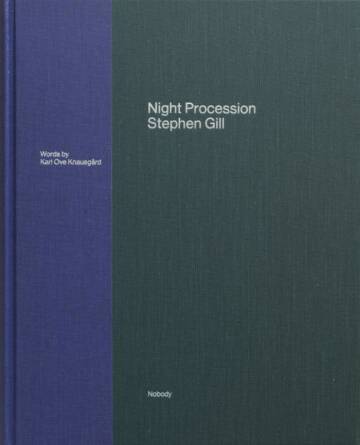





























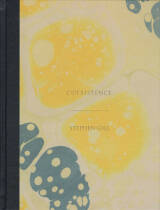





























;jpg?c=756810346dff442578cb514a4d86b653)
;jpg?c=200f63648ea7b2cb994afa4cb65b2f0c)
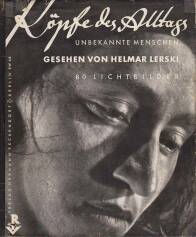
;jpg?c=99699862045883df39f9dd536e65901c)
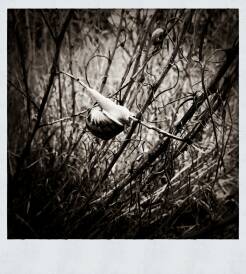


_(荒木経惟_ゼロックス写真帳_#2);jpg?c=bdba23fd82bb23d331b7db92a836c403)
;jpg?c=8c505814bb215507267c04b84d48d520)
